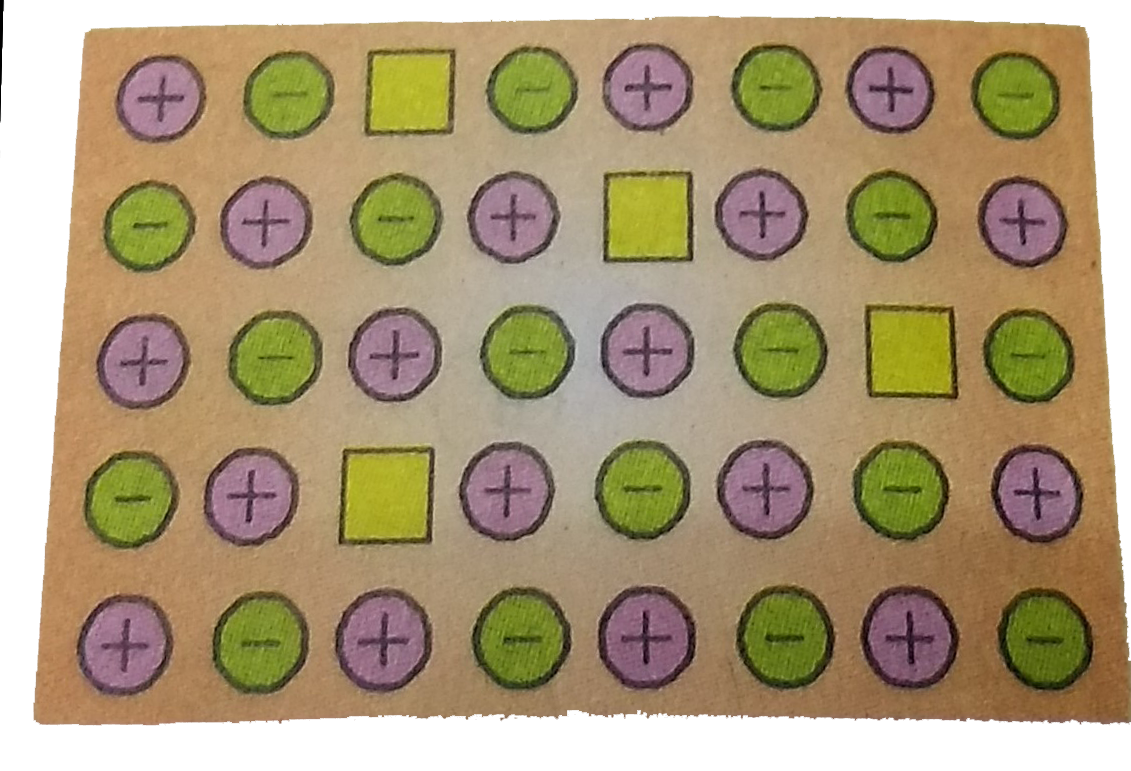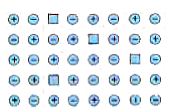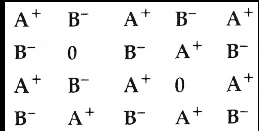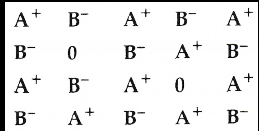Examine the given defective crystal and
A+B−A+B−A+B−0B−A+B−A+B−A+0A+B−A+B−A+B−
Answer the following questions :
(i) What type of stoichiometirc defect is shown by the crystal ?
(ii) How is the density of the crystal affected by this defect ?
(iii) What type of ionic substances show such defect ? Solution in Kannada
(i) Schottky defect.
(ii) Decreases.
(iii) Alkali metal halides/Ionic substances having almost similar size of cations and anions (NaCl/KCl).
Topper's Solved these Questions
- BOOK - OSWAAL PUBLICATIONCHAPTER - SOLID STATEEXERCISE - TOPIC -2 (VERY SHORT ANSWER TYPE QUESTIONS )23videos
SOLID STATE
- BOOK - OSWAAL PUBLICATIONCHAPTER - Sample Paper 8EXERCISE - EXCERSICE54videos
Sample Paper 8
- BOOK - OSWAAL PUBLICATIONCHAPTER - SOLUTIONSEXERCISE - TOPIC - 3 COLLIGATIVE PROPERTIES , DETERMINATION OF MOLAR MASS, ABNORMAL MOLAR MASS, VAN.T HOFF FACTOR (LONG ANSWER TYPE QUESTIONS - II)18videos
SOLUTIONS
Similar Questions
Name the crystal defect which lowers the density in an ionic crystal
02:52View SolutionGive an example of polydendate ligand.
03:01View Solution(a) Define the following terms :
(i) Molarity
(ii) Molal elevation constant(Kb)
(b) A solution containing 15 g urea (molar mass = 60 g mol−1) per litre of solution in water has same osmotic pressure (isotonic) as a solution of glucose (molar mass = 180 g mol−1) in water. Calculate the mass of glucose present in one litte of its solution.03:51View SolutionExamine the illustration of a portion of the deffective crystal and answer the following question :
(a) What are these type of vacancy defects called ?
(b) How is the density of a crystal affected by these defects ?
(c) Name one ionic compound which can show this type of defect in the crystalline state.
(d) How is the stoichiometry of the compound affected ?
 03:51View Solution
03:51View SolutionExamiine the given defective crystal (i) What type of stoichiometric defect is shown by the the crystal ? (ii) How is the density of the crystal affected by this defect ? (iii) What type of ionic substance show such defect ?
View SolutionExamine the given defective crystal {:(A^(+), B^(-),A^(+),B^(-),A^(+)),(B^(-), O,B^(-), A^(+),B^(-)),(A^(+),B^(-),A^(+),O,A^(+)),(B^(-),A^(+),B^(-),A^(+),B^(-)):} Answer the following question : (i) What type of stoichiometric defect is shown by the crystal ? (ii) How is the density of the crystal affected by this defect ? (iii) What type of ionic substances show such defect ?
05:58View SolutionExamine the given defective crystal {:(A^+, B^- , A^+ , B^- , A^+),(B^- , O, B^- , A^+ , B^-),(A^+, B^- , A^+ , O, A^+),(B^-, A^+, B^-, A^+, B^- ):} Answer the following questions : (i)What type of stoichiometric defect is shown by the crystal ? (ii)How is the density of the crystal affected by this defect ? (iii)What type of ionic substances show such defect ?
View SolutionExamine the illustration of a portion of the defective crystal given below and answer the following questions :
(i) What are these type of vacancy defects called ?
(ii) How is the density of a crystal affected by these defects ?
(iii) Name one ionic compound which can show this type of defect in the crystalline state.
(iv) How is the stoichiometry of the compound affected ?
 02:11View Solution
02:11View SolutionExamiine the given defective crystal (i) What type of stoichiometric defect is shown by the the crystal ? (ii) How is the density of the crystal affected by this defect ? (iii) What type of ionic substance show such defect ?
02:39View SolutionExamine the given defective crystal. {:(A^+,B^-,A^+,B^-,A^+),(B^-,O,B^-,A^+,B^-),(A^+,B^-,A^+,O,A^+),(B^-,A^+,B^-,A^+,B^-):} Answer the following questions: (i) What type of stoichiometric defect is shown by the crystal? (ii) How is the density of the crystal affected by this defect? (iii) What type of ionic substances show such defect?
05:22View SolutionExamine the given defective crystal

Answer the following questions.
What type of stoichiometric defect is shown by the crystal?02:18View SolutionExamine the given defective crystal Answer the following questions. How is the density of the crystal affected by this defect?
02:20View SolutionExamine the illustration of a portion of the deffective crystal and answer the following question :
(a) What are these type of vacancy defects called ?
(b) How is the density of a crystal affected by these defects ?
(c) Name one ionic compound which can show this type of defect in the crystalline state.
(d) How is the stoichiometry of the compound affected ?
 06:10View Solution
06:10View SolutionExamine the given defective crystal?

Answer the following questions:
What type of stoichiometric defect is shown by the crystal?03:06View SolutionExamine the given defective crystal?

Answer the following questions:
How is the density of the crystal affected by this defect?05:15View Solution

